 Tìm kiếm
Tìm kiếm
Chương III Luật An ninh mạng 2018: Phòng ngừa, xử lý hành vi xâm phạm an ninh mạng
| Số hiệu: | 24/2018/QH14 | Loại văn bản: | Luật |
| Nơi ban hành: | Quốc hội | Người ký: | Nguyễn Thị Kim Ngân |
| Ngày ban hành: | 12/06/2018 | Ngày hiệu lực: | 01/01/2019 |
| Ngày công báo: | 14/07/2018 | Số công báo: | Từ số 775 đến số 776 |
| Lĩnh vực: | Công nghệ thông tin, Văn hóa - Xã hội | Tình trạng: | Còn hiệu lực |
TÓM TẮT VĂN BẢN
Văn bản tiếng việt
Văn bản tiếng anh
1. Thông tin trên không gian mạng có nội dung tuyên truyền chống Nhà nước Cộng hòa xã hội chủ nghĩa Việt Nam bao gồm:
a) Tuyên truyền xuyên tạc, phỉ báng chính quyền nhân dân;
b) Chiến tranh tâm lý, kích động chiến tranh xâm lược, chia rẽ, gây thù hận giữa các dân tộc, tôn giáo và nhân dân các nước;
c) Xúc phạm dân tộc, quốc kỳ, quốc huy, quốc ca, vĩ nhân, lãnh tụ, danh nhân, anh hùng dân tộc.
2. Thông tin trên không gian mạng có nội dung kích động gây bạo loạn, phá rối an ninh, gây rối trật tự công cộng bao gồm:
a) Kêu gọi, vận động, xúi giục, đe dọa, gây chia rẽ, tiến hành hoạt động vũ trang hoặc dùng bạo lực nhằm chống chính quyền nhân dân;
b) Kêu gọi, vận động, xúi giục, đe dọa, lôi kéo tụ tập đông người gây rối, chống người thi hành công vụ, cản trở hoạt động của cơ quan, tổ chức gây mất ổn định về an ninh, trật tự.
3. Thông tin trên không gian mạng có nội dung làm nhục, vu khống bao gồm:
a) Xúc phạm nghiêm trọng danh dự, uy tín, nhân phẩm của người khác;
b) Thông tin bịa đặt, sai sự thật xâm phạm danh dự, uy tín, nhân phẩm hoặc gây thiệt hại đến quyền và lợi ích hợp pháp của cơ quan, tổ chức, cá nhân khác.
4. Thông tin trên không gian mạng có nội dung xâm phạm trật tự quản lý kinh tế bao gồm:
a) Thông tin bịa đặt, sai sự thật về sản phẩm, hàng hóa, tiền, trái phiếu, tín phiếu, công trái, séc và các loại giấy tờ có giá khác;
b) Thông tin bịa đặt, sai sự thật trong lĩnh vực tài chính, ngân hàng, thương mại điện tử, thanh toán điện tử, kinh doanh tiền tệ, huy động vốn, kinh doanh đa cấp, chứng khoán.
5. Thông tin trên không gian mạng có nội dung bịa đặt, sai sự thật gây hoang mang trong Nhân dân, gây thiệt hại cho hoạt động kinh tế - xã hội, gây khó khăn cho hoạt động của cơ quan nhà nước hoặc người thi hành công vụ, xâm phạm quyền và lợi ích hợp pháp của cơ quan, tổ chức, cá nhân khác.
6. Chủ quản hệ thống thông tin có trách nhiệm triển khai biện pháp quản lý, kỹ thuật để phòng ngừa, phát hiện, ngăn chặn, gỡ bỏ thông tin có nội dung quy định tại các khoản 1, 2, 3, 4 và 5 Điều này trên hệ thống thông tin thuộc phạm vi quản lý khi có yêu cầu của lực lượng chuyên trách bảo vệ an ninh mạng.
7. Lực lượng chuyên trách bảo vệ an ninh mạng và cơ quan có thẩm quyền áp dụng biện pháp quy định tại các điểm h, i và l khoản 1 Điều 5 của Luật này để xử lý thông tin trên không gian mạng có nội dung quy định tại các khoản 1, 2, 3, 4 và 5 Điều này.
8. Doanh nghiệp cung cấp dịch vụ trên mạng viễn thông, mạng Internet, các dịch vụ gia tăng trên không gian mạng và chủ quản hệ thống thông tin có trách nhiệm phối hợp với cơ quan chức năng xử lý thông tin trên không gian mạng có nội dung quy định tại các khoản 1, 2, 3, 4 và 5 Điều này.
9. Tổ chức, cá nhân soạn thảo, đăng tải, phát tán thông tin trên không gian mạng có nội dung quy định tại các khoản 1, 2, 3, 4 và 5 Điều này phải gỡ bỏ thông tin khi có yêu cầu của lực lượng chuyên trách bảo vệ an ninh mạng và chịu trách nhiệm theo quy định của pháp luật.
1. Hành vi gián điệp mạng; xâm phạm bí mật nhà nước, bí mật công tác, bí mật kinh doanh, bí mật cá nhân, bí mật gia đình và đời sống riêng tư trên không gian mạng bao gồm:
a) Chiếm đoạt, mua bán, thu giữ, cố ý làm lộ thông tin thuộc bí mật nhà nước, bí mật công tác, bí mật kinh doanh, bí mật cá nhân, bí mật gia đình và đời sống riêng tư gây ảnh hưởng đến danh dự, uy tín, nhân phẩm, quyền và lợi ích hợp pháp của cơ quan, tổ chức, cá nhân;
b) Cố ý xóa, làm hư hỏng, thất lạc, thay đổi thông tin thuộc bí mật nhà nước, bí mật công tác, bí mật kinh doanh, bí mật cá nhân, bí mật gia đình và đời sống riêng tư được truyền đưa, lưu trữ trên không gian mạng;
c) Cố ý thay đổi, hủy bỏ hoặc làm vô hiệu hóa biện pháp kỹ thuật được xây dựng, áp dụng để bảo vệ thông tin thuộc bí mật nhà nước, bí mật công tác, bí mật kinh doanh, bí mật cá nhân, bí mật gia đình và đời sống riêng tư;
d) Đưa lên không gian mạng những thông tin thuộc bí mật nhà nước, bí mật công tác, bí mật kinh doanh, bí mật cá nhân, bí mật gia đình và đời sống riêng tư trái quy định của pháp luật;
đ) Cố ý nghe, ghi âm, ghi hình trái phép các cuộc đàm thoại;
e) Hành vi khác cố ý xâm phạm bí mật nhà nước, bí mật công tác, bí mật kinh doanh, bí mật cá nhân, bí mật gia đình và đời sống riêng tư.
2. Chủ quản hệ thống thông tin có trách nhiệm sau đây:
a) Kiểm tra an ninh mạng nhằm phát hiện, loại bỏ mã độc, phần cứng độc hại, khắc phục điểm yếu, lỗ hổng bảo mật; phát hiện, ngăn chặn và xử lý các hoạt động xâm nhập bất hợp pháp hoặc nguy cơ khác đe dọa an ninh mạng;
b) Triển khai biện pháp quản lý, kỹ thuật để phòng ngừa, phát hiện, ngăn chặn hành vi gián điệp mạng, xâm phạm bí mật nhà nước, bí mật công tác, bí mật kinh doanh, bí mật cá nhân, bí mật gia đình và đời sống riêng tư trên hệ thống thông tin và kịp thời gỡ bỏ thông tin liên quan đến hành vi này;
c) Phối hợp, thực hiện yêu cầu của lực lượng chuyên trách an ninh mạng về phòng, chống gián điệp mạng, bảo vệ thông tin thuộc bí mật nhà nước, bí mật công tác, bí mật kinh doanh, bí mật cá nhân, bí mật gia đình và đời sống riêng tư trên hệ thống thông tin.
3. Cơ quan soạn thảo, lưu trữ thông tin, tài liệu thuộc bí mật nhà nước có trách nhiệm bảo vệ bí mật nhà nước được soạn thảo, lưu giữ trên máy tính, thiết bị khác hoặc trao đổi trên không gian mạng theo quy định của pháp luật về bảo vệ bí mật nhà nước.
4. Bộ Công an có trách nhiệm sau đây, trừ quy định tại khoản 5 và khoản 6 Điều này:
a) Kiểm tra an ninh mạng đối với hệ thống thông tin quan trọng về an ninh quốc gia nhằm phát hiện, loại bỏ mã độc, phần cứng độc hại, khắc phục điểm yếu, lỗ hổng bảo mật; phát hiện, ngăn chặn, xử lý hoạt động xâm nhập bất hợp pháp;
b) Kiểm tra an ninh mạng đối với thiết bị, sản phẩm, dịch vụ thông tin liên lạc, thiết bị kỹ thuật số, thiết bị điện tử trước khi đưa vào sử dụng trong hệ thống thông tin quan trọng về an ninh quốc gia;
c) Giám sát an ninh mạng đối với hệ thống thông tin quan trọng về an ninh quốc gia nhằm phát hiện, xử lý hoạt động thu thập trái phép thông tin thuộc bí mật nhà nước;
d) Phát hiện, xử lý các hành vi đăng tải, lưu trữ, trao đổi trái phép thông tin, tài liệu có nội dung thuộc bí mật nhà nước trên không gian mạng;
đ) Tham gia nghiên cứu, sản xuất sản phẩm lưu trữ, truyền đưa thông tin, tài liệu có nội dung thuộc bí mật nhà nước; sản phẩm mã hóa thông tin trên không gian mạng theo chức năng, nhiệm vụ được giao;
e) Thanh tra, kiểm tra công tác bảo vệ bí mật nhà nước trên không gian mạng của cơ quan nhà nước và bảo vệ an ninh mạng của chủ quản hệ thống thông tin quan trọng về an ninh quốc gia;
g) Tổ chức đào tạo, tập huấn nâng cao nhận thức và kiến thức về bảo vệ bí mật nhà nước trên không gian mạng, phòng, chống tấn công mạng, bảo vệ an ninh mạng đối với lực lượng bảo vệ an ninh mạng quy định tại khoản 2 Điều 30 của Luật này.
5. Bộ Quốc phòng có trách nhiệm thực hiện các nội dung quy định tại các điểm a, b, c, d, đ và e khoản 4 Điều này đối với hệ thống thông tin quân sự.
6. Ban Cơ yếu Chính phủ có trách nhiệm tổ chức thực hiện các quy định của pháp luật trong việc sử dụng mật mã để bảo vệ thông tin thuộc bí mật nhà nước được lưu trữ, trao đổi trên không gian mạng.
1. Hành vi sử dụng không gian mạng, công nghệ thông tin, phương tiện điện tử để vi phạm pháp luật về an ninh quốc gia, trật tự, an toàn xã hội bao gồm:
a) Đăng tải, phát tán thông tin trên không gian mạng có nội dung quy định tại các khoản 1, 2, 3, 4 và 5 Điều 16 và hành vi quy định tại khoản 1 Điều 17 của Luật này;
b) Chiếm đoạt tài sản; tổ chức đánh bạc, đánh bạc qua mạng Internet; trộm cắp cước viễn thông quốc tế trên nền Internet; vi phạm bản quyền và sở hữu trí tuệ trên không gian mạng;
c) Giả mạo trang thông tin điện tử của cơ quan, tổ chức, cá nhân; làm giả, lưu hành, trộm cắp, mua bán, thu thập, trao đổi trái phép thông tin thẻ tín dụng, tài khoản ngân hàng của người khác; phát hành, cung cấp, sử dụng trái phép các phương tiện thanh toán;
d) Tuyên truyền, quảng cáo, mua bán hàng hóa, dịch vụ thuộc danh mục cấm theo quy định của pháp luật;
đ) Hướng dẫn người khác thực hiện hành vi vi phạm pháp luật;
e) Hành vi khác sử dụng không gian mạng, công nghệ thông tin, phương tiện điện tử để vi phạm pháp luật về an ninh quốc gia, trật tự, an toàn xã hội.
2. Lực lượng chuyên trách bảo vệ an ninh mạng có trách nhiệm phòng, chống hành vi sử dụng không gian mạng, công nghệ thông tin, phương tiện điện tử để vi phạm pháp luật về an ninh quốc gia, trật tự, an toàn xã hội.
1. Hành vi tấn công mạng và hành vi có liên quan đến tấn công mạng bao gồm:
a) Phát tán chương trình tin học gây hại cho mạng viễn thông, mạng Internet, mạng máy tính, hệ thống thông tin, hệ thống xử lý và điều khiển thông tin, cơ sở dữ liệu, phương tiện điện tử;
b) Gây cản trở, rối loạn, làm tê liệt, gián đoạn, ngưng trệ hoạt động, ngăn chặn trái phép việc truyền đưa dữ liệu của mạng viễn thông, mạng Internet, mạng máy tính, hệ thống thông tin, hệ thống xử lý và điều khiển thông tin, phương tiện điện tử;
c) Xâm nhập, làm tổn hại, chiếm đoạt dữ liệu được lưu trữ, truyền đưa qua mạng viễn thông, mạng Internet, mạng máy tính, hệ thống thông tin, hệ thống xử lý và điều khiển thông tin, cơ sở dữ liệu, phương tiện điện tử;
d) Xâm nhập, tạo ra hoặc khai thác điểm yếu, lỗ hổng bảo mật và dịch vụ hệ thống để chiếm đoạt thông tin, thu lợi bất chính;
đ) Sản xuất, mua bán, trao đổi, tặng cho công cụ, thiết bị, phần mềm có tính năng tấn công mạng viễn thông, mạng Internet, mạng máy tính, hệ thống thông tin, hệ thống xử lý và điều khiển thông tin, cơ sở dữ liệu, phương tiện điện tử để sử dụng vào mục đích trái pháp luật;
e) Hành vi khác gây ảnh hưởng đến hoạt động bình thường của mạng viễn thông, mạng Internet, mạng máy tính, hệ thống thông tin, hệ thống xử lý và điều khiển thông tin, cơ sở dữ liệu, phương tiện điện tử.
2. Chủ quản hệ thống thông tin có trách nhiệm áp dụng biện pháp kỹ thuật để phòng ngừa, ngăn chặn hành vi quy định tại các điểm a, b, c, d và e khoản 1 Điều này đối với hệ thống thông tin thuộc phạm vi quản lý.
3. Khi xảy ra tấn công mạng xâm phạm hoặc đe dọa xâm phạm chủ quyền, lợi ích, an ninh quốc gia, gây tổn hại nghiêm trọng trật tự, an toàn xã hội, lực lượng chuyên trách bảo vệ an ninh mạng chủ trì, phối hợp với chủ quản hệ thống thông tin và tổ chức, cá nhân có liên quan áp dụng biện pháp xác định nguồn gốc tấn công mạng, thu thập chứng cứ; yêu cầu doanh nghiệp cung cấp dịch vụ trên mạng viễn thông, mạng Internet, các dịch vụ gia tăng trên không gian mạng chặn lọc thông tin để ngăn chặn, loại trừ hành vi tấn công mạng và cung cấp đầy đủ, kịp thời thông tin, tài liệu liên quan.
4. Trách nhiệm phòng, chống tấn công mạng được quy định như sau:
a) Bộ Công an chủ trì, phối hợp với Bộ, ngành có liên quan thực hiện công tác phòng ngừa, phát hiện, xử lý hành vi quy định tại khoản 1 Điều này xâm phạm hoặc đe dọa xâm phạm chủ quyền, lợi ích, an ninh quốc gia, gây tổn hại nghiêm trọng trật tự, an toàn xã hội trên phạm vi cả nước, trừ trường hợp quy định tại điểm b và điểm c khoản này;
b) Bộ Quốc phòng chủ trì, phối hợp với Bộ, ngành có liên quan thực hiện công tác phòng ngừa, phát hiện, xử lý hành vi quy định tại khoản 1 Điều này đối với hệ thống thông tin quân sự;
c) Ban Cơ yếu Chính phủ chủ trì, phối hợp với Bộ, ngành có liên quan thực hiện công tác phòng ngừa, phát hiện, xử lý hành vi quy định tại khoản 1 Điều này đối với hệ thống thông tin cơ yếu thuộc Ban Cơ yếu Chính phủ.
1. Cơ quan nhà nước có thẩm quyền có trách nhiệm áp dụng biện pháp theo quy định của Luật này, Điều 29 của Luật An toàn thông tin mạng và pháp luật về phòng, chống khủng bố để xử lý khủng bố mạng.
2. Chủ quản hệ thống thông tin thường xuyên rà soát, kiểm tra hệ thống thông tin thuộc phạm vi quản lý nhằm loại trừ nguy cơ khủng bố mạng.
3. Khi phát hiện dấu hiệu, hành vi khủng bố mạng, cơ quan, tổ chức, cá nhân phải kịp thời báo cho lực lượng bảo vệ an ninh mạng. Cơ quan tiếp nhận tin báo có trách nhiệm tiếp nhận đầy đủ tin báo về khủng bố mạng và kịp thời thông báo cho lực lượng chuyên trách bảo vệ an ninh mạng.
4. Bộ Công an chủ trì, phối hợp với Bộ, ngành có liên quan triển khai công tác phòng, chống khủng bố mạng, áp dụng biện pháp vô hiệu hóa nguồn khủng bố mạng, xử lý khủng bố mạng, hạn chế đến mức thấp nhất hậu quả xảy ra đối với hệ thống thông tin, trừ trường hợp quy định tại khoản 5 và khoản 6 Điều này.
5. Bộ Quốc phòng chủ trì, phối hợp với Bộ, ngành có liên quan triển khai công tác phòng, chống khủng bố mạng, áp dụng biện pháp xử lý khủng bố mạng xảy ra đối với hệ thống thông tin quân sự.
6. Ban Cơ yếu Chính phủ chủ trì, phối hợp với Bộ, ngành có liên quan triển khai công tác phòng, chống khủng bố mạng, áp dụng biện pháp xử lý khủng bố mạng xảy ra đối với hệ thống thông tin cơ yếu thuộc Ban Cơ yếu Chính phủ.
1. Tình huống nguy hiểm về an ninh mạng bao gồm:
a) Xuất hiện thông tin kích động trên không gian mạng có nguy cơ xảy ra bạo loạn, phá rối an ninh, khủng bố;
b) Tấn công vào hệ thống thông tin quan trọng về an ninh quốc gia;
c) Tấn công nhiều hệ thống thông tin trên quy mô lớn, cường độ cao;
d) Tấn công mạng nhằm phá hủy công trình quan trọng về an ninh quốc gia, mục tiêu quan trọng về an ninh quốc gia;
đ) Tấn công mạng xâm phạm nghiêm trọng chủ quyền, lợi ích, an ninh quốc gia; gây tổn hại đặc biệt nghiêm trọng trật tự, an toàn xã hội, quyền và lợi ích hợp pháp của cơ quan, tổ chức, cá nhân.
2. Trách nhiệm phòng ngừa tình huống nguy hiểm về an ninh mạng được quy định như sau:
a) Lực lượng chuyên trách bảo vệ an ninh mạng phối hợp với chủ quản hệ thống thông tin quan trọng về an ninh quốc gia triển khai các giải pháp kỹ thuật, nghiệp vụ để phòng ngừa, phát hiện, xử lý tình huống nguy hiểm về an ninh mạng;
b) Doanh nghiệp viễn thông, Internet, công nghệ thông tin, doanh nghiệp cung cấp dịch vụ trên mạng viễn thông, mạng Internet, các dịch vụ gia tăng trên không gian mạng và cơ quan, tổ chức, cá nhân có liên quan có trách nhiệm phối hợp với lực lượng chuyên trách bảo vệ an ninh mạng thuộc Bộ Công an trong phòng ngừa, phát hiện, xử lý tình huống nguy hiểm về an ninh mạng.
3. Biện pháp xử lý tình huống nguy hiểm về an ninh mạng bao gồm:
a) Triển khai ngay phương án phòng ngừa, ứng phó khẩn cấp về an ninh mạng, ngăn chặn, loại trừ hoặc giảm nhẹ thiệt hại do tình huống nguy hiểm về an ninh mạng gây ra;
b) Thông báo đến cơ quan, tổ chức, cá nhân có liên quan;
c) Thu thập thông tin liên quan; theo dõi, giám sát liên tục đối với tình huống nguy hiểm về an ninh mạng;
d) Phân tích, đánh giá thông tin, dự báo khả năng, phạm vi ảnh hưởng và mức độ thiệt hại do tình huống nguy hiểm về an ninh mạng gây ra;
đ) Ngừng cung cấp thông tin mạng tại khu vực cụ thể hoặc ngắt cổng kết nối mạng quốc tế;
e) Bố trí lực lượng, phương tiện ngăn chặn, loại bỏ tình huống nguy hiểm về an ninh mạng;
g) Biện pháp khác theo quy định của Luật An ninh quốc gia.
4. Việc xử lý tình huống nguy hiểm về an ninh mạng được quy định như sau:
a) Khi phát hiện tình huống nguy hiểm về an ninh mạng, cơ quan, tổ chức, cá nhân kịp thời thông báo cho lực lượng chuyên trách bảo vệ an ninh mạng và áp dụng ngay các biện pháp quy định tại điểm a và điểm b khoản 3 Điều này;
b) Thủ tướng Chính phủ xem xét, quyết định hoặc ủy quyền cho Bộ trưởng Bộ Công an xem xét, quyết định, xử lý tình huống nguy hiểm về an ninh mạng trong phạm vi cả nước hoặc từng địa phương hoặc đối với một mục tiêu cụ thể.
Thủ tướng Chính phủ xem xét, quyết định hoặc ủy quyền cho Bộ trưởng Bộ Quốc phòng xem xét, quyết định, xử lý tình huống nguy hiểm về an ninh mạng đối với hệ thống thông tin quân sự và hệ thống thông tin cơ yếu thuộc Ban Cơ yếu Chính phủ;
c) Lực lượng chuyên trách bảo vệ an ninh mạng chủ trì, phối hợp với cơ quan, tổ chức, cá nhân có liên quan áp dụng các biện pháp quy định tại khoản 3 Điều này để xử lý tình huống nguy hiểm về an ninh mạng;
d) Cơ quan, tổ chức, cá nhân có liên quan có trách nhiệm phối hợp với lực lượng chuyên trách bảo vệ an ninh mạng thực hiện biện pháp nhằm ngăn chặn, xử lý tình huống nguy hiểm về an ninh mạng.
1. Đấu tranh bảo vệ an ninh mạng là hoạt động có tổ chức do lực lượng chuyên trách bảo vệ an ninh mạng thực hiện trên không gian mạng nhằm bảo vệ an ninh quốc gia và bảo đảm trật tự, an toàn xã hội.
2. Nội dung đấu tranh bảo vệ an ninh mạng bao gồm:
a) Tổ chức nắm tình hình có liên quan đến hoạt động bảo vệ an ninh quốc gia;
b) Phòng, chống tấn công và bảo vệ hoạt động ổn định của hệ thống thông tin quan trọng về an ninh quốc gia;
c) Làm tê liệt hoặc hạn chế hoạt động sử dụng không gian mạng nhằm gây phương hại an ninh quốc gia hoặc gây tổn hại đặc biệt nghiêm trọng trật tự, an toàn xã hội;
d) Chủ động tấn công vô hiệu hóa mục tiêu trên không gian mạng nhằm bảo vệ an ninh quốc gia và bảo đảm trật tự, an toàn xã hội.
3. Bộ Công an chủ trì, phối hợp với Bộ, ngành có liên quan thực hiện đấu tranh bảo vệ an ninh mạng.
PREVENTION AND ACTIONS AGAINST CYBERSECURITY VIOLATIONS
Article 16. Prevention and handling of cyberinformation that is meant to oppose the government of Socialist Republic of Vietnam, cause riots, disturb the peace, humiliate or slander, or violate economic management laws
1. A piece of information in cyberspace will be considered propaganda against the government of Socialist Republic of Vietnam if it:
a) slanders or defames the people's government;
b) is used for psychological warfare; provokes war of aggression; causes discrimination against or hostility towards a race, religion or country;
c) offends the people or desecrate the national flag, national anthem, political leaders, honored people or national heroes.
2. A piece of information in cyberspace will be considered provoking riots or disturbing the peace if it:
a) persuades, encourages, deceives, threatens people or causes discrimination for the purpose of armed activities or use of violent force to oppose the people's government.
b) encourages, deceives, threatens or persuades people to participate in public gathering intended to cause disruption or oppose law enforcers or obstructs operation of an organization, thus threatens public order and security.
3. A piece of information in cyberspace will be considered humiliating or slandering if it:
a) seriously harms another person’s dignity or honor;
b) is fabricated to harm another person’s dignity or honor or violate lawful rights and interests of another organization or individual.
4. Information in cyberspace that is meant to commit violations against regulations of law on economic management includes:
a) Fabricated or false information about products, goods, money, bonds, treasury bills, checks and other financial instruments;
b) Fabricated or false information about finance, banking, e-commerce, electronic payment, foreign exchange, capital raising, multi-level marketing, securities.
5. Other fabricated or false information in cyberspace that is meant to cause public confusion or economic loss, obstructing regulatory bodies or law enforcers, violate lawful rights and interests of other organizations and individuals.
6. Administrators of information systems have the responsibility to implement administrative and technical measures for prevention, discovery, intervention and removal of the information mentioned in Clause 1 through 5 of this Article on their systems at the request of professional cybersecurity forces.
7. Professional cybersecurity forces and competent authorities shall apply the measures mentioned in Point h, i and l Clause 1 Article 5 of this Article to handle the cyberinformation mentioned in Clause 1 through 5 of this Article.
8. TSPs, ISPs, VAS providers and information system administrators shall cooperate with competent authorities in handling the information mentioned in Clause 1 through 5 of this Article.
9. Any organization or individual that devises, posts or spreads the information mentioned in Clause 1 through 5 of this Article shall remove it at the request of the professional cybersecurity force and bear legal responsibility.
Article 17. Prevention and response to cyber espionage; protection of state-secret information, business secrets, family secrets and privacy in cyberspace
1. The following acts are considered cyber espionage or deliberate violation of state-secret information, work secrets, business secrets, family secrets and privacy in cyberspace:
a) Illegal obtainment, trade, collection, deliberate revelation of information classified as state secret information, work secrets, business secrets, family secrets and privacy which harm the dignity, reputation or lawful rights and interests of another organization or individual;
b) Deliberate deletion, causing damage, loss or changes to information classified as state-secret information, work secrets, business secrets, family secrets and privacy that is transmitted or stored in cyberspace;
c) Deliberately changing, canceling or neutralizing a technical measure that is meant to protect state-secret information, work secrets, business secrets, family secrets or privacy;
d) Posting state-secret information, work secrets, business secrets, family secrets and privacy in cyberspace against the law;
dd) Illegally eavesdropping or recording conversations;
e) Other acts that are considered deliberate violation of state-secret information, work secrets, business secrets, family secrets or privacy in cyberspace:
2. Information system administrators have the responsibility to:
a) Carry out cybersecurity inspection to detect and remove malicious codes and hardware, fix weaknesses and vulnerabilities; discover and prevent infiltration or other risks to cybersecurity;
b) Implement administrative and technical measures to prevent, discover and stop cyber espionage, infringement upon e state-secret information, work secrets, business secrets, family secrets or infringement upon privacy in their systems and remove relevant information;
c) Comply with requests of cybersecurity forces regarding prevention and response to cyber espionage and protection of state-secret information, work secrets, business secrets, family secrets and privacy in their systems.
3. The agencies responsible for drafting and storing state-secret information and documents are also responsible for protection of such information and documents which are stored in computers, other devices or transmitted in cyberspace in accordance with regulations of law on protection of state secrets.
4. The Ministry of Public Security, except for the cases mentioned in Clause 5 and Clause 6 of this Article, has the responsibility to:
a) Carry out inspection of cybersecurity of national security information systems to detect and remove malicious codes and hardware, fix weaknesses and vulnerabilities; discover and prevent network infiltration;
b) Carry out inspection of cybersecurity of communication equipment, products and services, digital and electronic devices before they are used in any national security information systems;
c) Carry out supervision of cybersecurity of national security information systems to detect and stop illegal collection of state-secret information;
d) Discover and take actions against acts of posting, storing or exchanging information and documents classified as state secrets in cyberspace;
dd) Participate in research and manufacturing of products serving storage and transmission of state-secret information and documents, and cryptographic products;
e) Inspect the protection of state secrets in cyberspace by state authorities and administrators of national security information systems;
g) Provide training in protection of state secrets in cyberspace, prevention and response to cyberattack, and cybersecurity protection for the cybersecurity forces as prescribed in Clause 2 Article 30 of this Law.
5. The Ministry of National Defense has the responsibility mentioned in Point a through e Clause 4 of this Article regarding military information systems.
6. VGCA is responsible for organizing implementation of regulations of law on cryptography in order to protect state-secret information stored and transmitted in cyberspace.
Article 18. Prevention and response to use of cyberspace, information technology or electronic devices for violations of regulations of law on national security and public order
1. Use of cyberspace, information technology or electronic devices for violations of regulations of law on national security and public order includes:
a) Posting or spreading the information mentioned in Clause 1 through 5 of Article 16 in cyberspace and the acts mentioned in Clause 1 Article 17 of this Law;
b) Appropriation of property; online gambling or organization thereof; theft of service involving voice over Internet protocol (VoIP); intellectual property and copyright infringement in cyberspace;
c) Making fake websites of other organizations and individuals; forging, stealing, illegally using, trading, collecting or exchanging others’ credit information or bank accounts; illegally issuing, providing or using payment facilities;
d) Advertising or trading in banned goods/services;
dd) Instructing others to commit violations of law;
e) Other uses of cyberspace, information technology or electronic devices for violations of regulations of law on national security and public order.
2. Professional cybersecurity forces have the responsibility to prevent and respond to use of cyberspace, information technology or electronic devices for violations of regulations of law on national security and public order.
Article 19. Prevention and response to cyberattacks
1. Acts of cyberattacks and relevant acts include:
a) Spread of software programs that are harmful to a telecommunications network, the Internet, computer network, communication system, information processing and control systems, databases or electronic devices;
b) Obstructing, causing disruption, paralysis or interruption of data transmission of a telecommunications network, the Internet, computer network, communication system, information processing system or electronic device control system;
c) Infiltrating, causing damage or illegally obtaining data stored or transmitted through a telecommunications network, the Internet, computer network, communication system, information processing and control systems, databases or electronic devices;
d) Infiltrating, creating or exploiting weaknesses or vulnerabilities of a system to illegally obtain information for profiteering;
d) Producing, trading, exchanging, giving tools, equipment, software programs that are meant to attack a telecommunications network, the Internet, computer network, a communication system, information processing and control systems, database or electronic devices;
e) Other acts affecting normal operation of a telecommunications network, the Internet, computer network, communication system, information processing and control systems, database or electronic devices;
2. Administrators of information systems have the responsibility to implement technical measures for preventing the acts mentioned in Point a, b, c, d, e Clause 1 of this Article from affecting their systems.
3. In case of a cyberattack that violates or threatens to violate national security, national interests, sovereignty or disrupt public order, the professional cybersecurity force shall take charge and cooperate with the system administrator, relevant organizations and individuals in tracing the origin of the attack, collecting evidence; request TSPs, ISPs and VAS providers to filter information serving the attack and provide relevant information and documents.
4. Responsibility for prevention and response to cyberattack:
a) The Ministry of Public Security shall take charge and cooperate with relevant ministries in prevention, detection and response to the acts mentioned in Clause 1 of this Article if they violate or threaten to violate national security, national interest, sovereignty or seriously disrupt public order nationwide, except of the cases mentioned in Point b and Point c of this Clause;
b) The Ministry of National Defense shall take charge and cooperate with relevant ministries in prevention, detection and response to the acts mentioned in Clause 1 of this Article if they are committed against military information systems;
c) VGCA shall take charge and cooperate with relevant ministries in prevention, detection and response to the acts mentioned in Clause 1 of this Article if they are committed against cryptography systems under its management.
Article 20. Prevention and response to cyberterrorism
1. Competent authorities shall implement the measures against cyberterrorism provided for in this Law, Article 29 of the Law on Cyberinformation security and regulations of law against cyberterrorism.
2. Information system administrators shall regularly review and inspect their systems to eliminate the risks of cyberterrorism
3. Any sign of cyberterrorism must be promptly reported to cybersecurity forces. The authority that receives the information about cyberterrorism shall promptly notify a professional cybersecurity force.
4. The Ministry of Public Security shall take charge and cooperate with relevant ministries in prevention and response to cyberterrorism, neutralize the sources of cyberterrorism, take actions against cyberterrorism and minimize damage to information systems, except for the cases mentioned in Clause 5 and Clause 6 of this Article.
5. The Ministry of National Defense shall take charge and cooperate with relevant ministries in prevention and response to cyberterrorism against military information system.
6. VGCA shall take charge and cooperate with relevant ministries in prevention and response to cyberterrorism against cryptography systems under its management.
Article 21. Prevention and response to cybersecurity emergencies
1. Cybersecurity emergencies include:
a) Provoking information in cyberspace that might lead to riots, disruption of public order or terrorism;
b) Attack on a national security information system;
c) Large-scale and intense attacks on multiple information systems;
d) Cyberattack meant to destroy a national security work or target;
dd) Cyber attack that seriously violates national security, national interest, sovereignty, social order or the lawful rights and interests of an organization or individual.
2. Responsibility for prevention and response to cybersecurity emergencies:
a) Professional cybersecurity forces shall cooperate with administrators of national security information systems in implementing specific measures for prevention, detection and response to cybersecurity emergencies;
b) Telecommunication enterprises, Internet enterprises, IT enterprises, TSPs, ISPs, VAS providers, relevant organizations and individuals shall cooperate with professional cybersecurity forces of the Ministry of Public Security in prevention, detection and response to cybersecurity emergencies.
3. Actions to be taken in response to a cybersecurity emergency:
a) Promptly implement the cybersecurity emergency prevention and response plan; avoid, eliminate or minimize damage caused by the cybersecurity emergency;
b) Inform relevant organizations and individuals;
c) Collect relevant information; continuously monitor the cybersecurity emergency;
d) Analyze information; estimate damage and impacts caused by the cybersecurity emergency;
dd) Stop providing cyberinformation within a certain area or disconnect from the international internet gateway;
e) Provide forces and equipment for prevention and elimination of the cybersecurity emergency:
g) Other measures specified in the Law on National security.
4. Responsibility to respond to cybersecurity emergencies:
a) The organization or individual that detects a cybersecurity emergency must promptly inform a professional cybersecurity force and implement the measures mentioned in Point a and Point b Clause 3 of this Article;
b) The Prime Minister shall make decisions or authorize the Minister of Public Security to make decisions regarding cybersecurity emergencies that occur nationwide or locally or to a specific target.
The Prime Minister shall make decisions or authorize the Minister of National Defense to make decisions regarding cybersecurity emergencies that occur to cryptography of VGCA;
c) Professional cybersecurity forces shall take charge and cooperate with relevant organizations and individuals in implementing the measures mentioned in Clause 3 of this Article to respond to cybersecurity emergencies;
d) Relevant organizations and individuals shall cooperate with professional cybersecurity forces in implementing measures for prevention and response to cybersecurity emergencies.
Article 22. Cybersecurity protection activities
1. Cybersecurity protection activities are organized by professional cybersecurity forces to protect national security and public order.
2. Cybersecurity protection activities include:
a) Monitoring status of national security;
b) Prevent and respond to attacks; protect national security information systems;
c) Paralyze or limit activities using cyberspace to violate national security or public order;
d) Launch cyberattacks to protect national security and public order.
3. The Ministry of Public Security shall take charge and cooperate with relevant ministries in cybersecurity protection activities.
Văn bản liên quan
Cập nhật
Bài viết liên quan
Tấn công mạng là gì? 13 biện pháp bảo vệ an ninh mạng mới nhất 2025
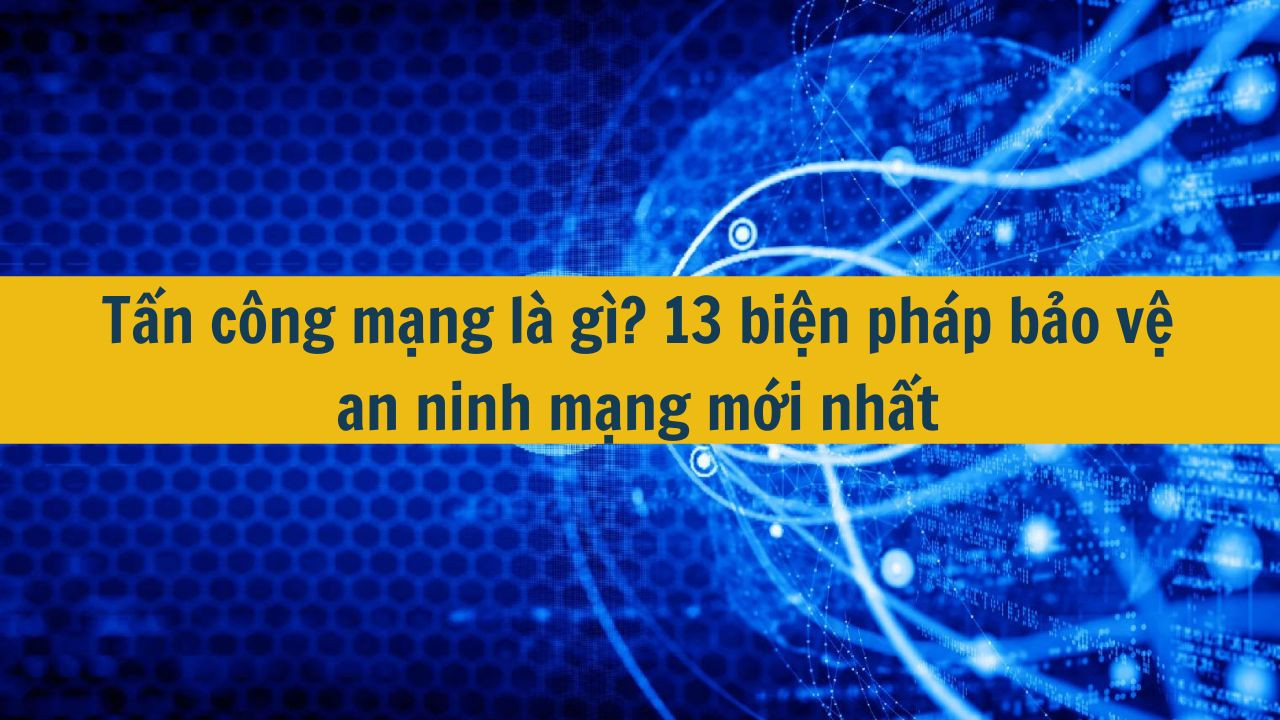
Tấn công mạng là gì? 13 biện pháp bảo vệ an ninh mạng mới nhất 2025
An ninh mạng là phương pháp bảo vệ an toàn cho máy tính, mạng, ứng dụng phần mềm, hệ thống quan trọng và dữ liệu khỏi các mối đe dọa kỹ thuật số tiềm ẩn. Vậy tấn công mạng là gì? 13 biện pháp bảo vệ an ninh mạng gồm những gì? Bài viết sau đây sẽ làm rõ về vấn đề này. 13/03/2025Hệ thống thông tin quan trọng về an ninh quốc gia bao gồm những gì mới nhất 2025?
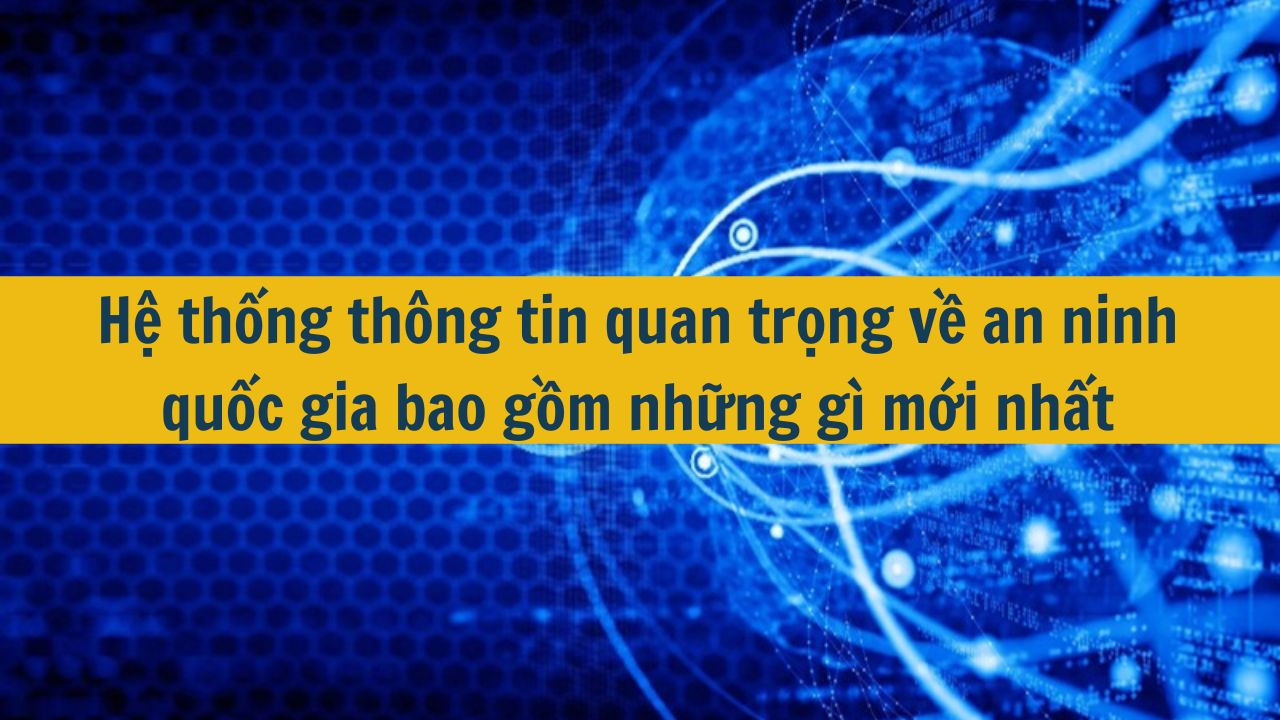
Hệ thống thông tin quan trọng về an ninh quốc gia bao gồm những gì mới nhất 2025?
An ninh mạng là phương pháp bảo vệ an toàn cho máy tính, mạng, ứng dụng phần mềm, hệ thống quan trọng và dữ liệu khỏi các mối đe dọa kỹ thuật số tiềm ẩn. Vậy hệ thống thông tin quan trọng về an ninh quốc gia bao gồm những gì mới nhất 2025? Bài viết sau đây sẽ làm rõ về vấn đề này. 13/03/20257 nguyên tắc bảo vệ anh ninh mạng mới nhất 2025
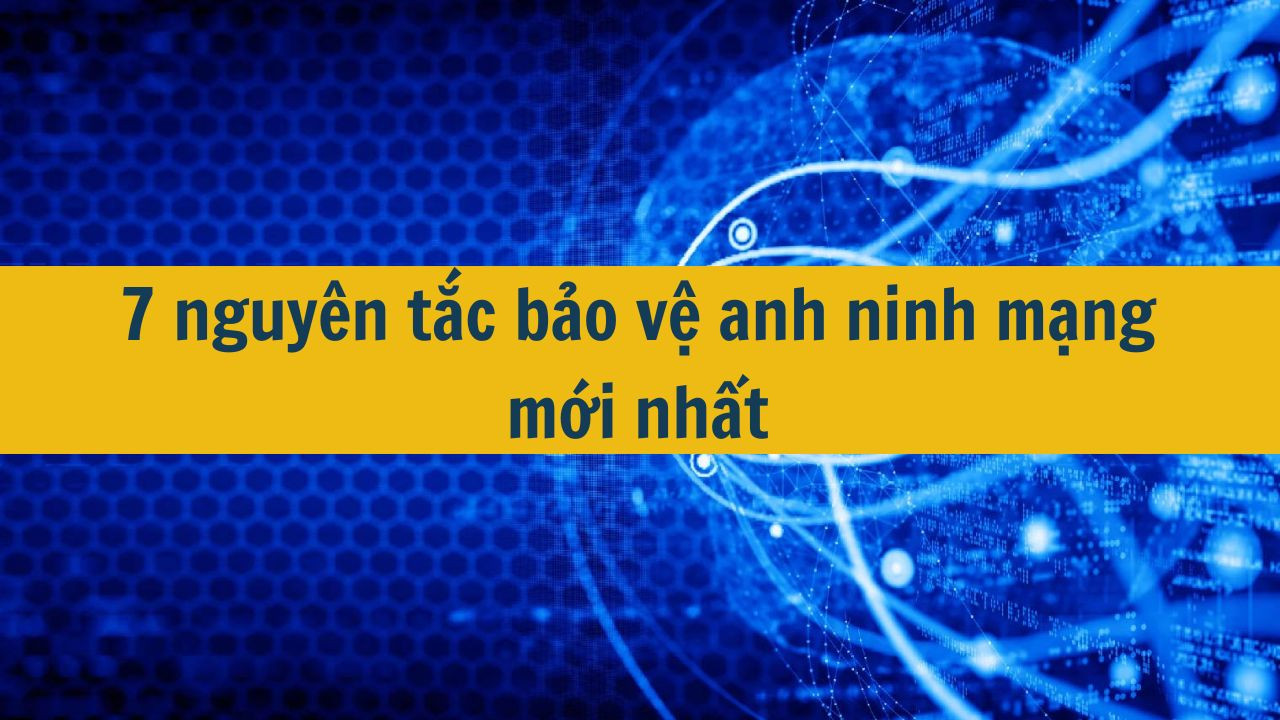
7 nguyên tắc bảo vệ anh ninh mạng mới nhất 2025
An ninh mạng là phương pháp bảo vệ an toàn cho máy tính, mạng, ứng dụng phần mềm, hệ thống quan trọng và dữ liệu khỏi các mối đe dọa kỹ thuật số tiềm ẩn. Vậy 7 nguyên tắc bảo vệ anh ninh mạng mới nhất 2025? Bài viết sau đây sẽ làm rõ về vấn đề này. 14/03/2025An ninh mạng là gì? 6 hành vi bị cấm về an ninh mạng mới nhất 2025
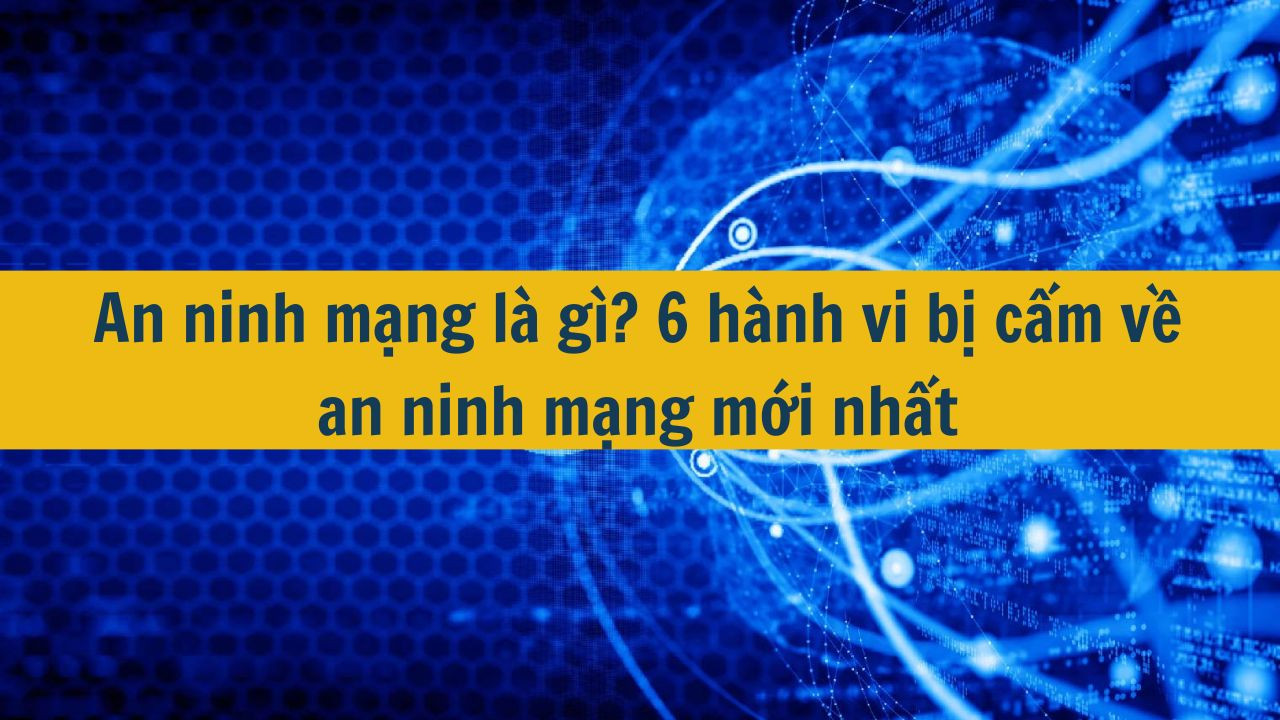
An ninh mạng là gì? 6 hành vi bị cấm về an ninh mạng mới nhất 2025
An ninh mạng là phương pháp bảo vệ an toàn cho máy tính, mạng, ứng dụng phần mềm, hệ thống quan trọng và dữ liệu khỏi các mối đe dọa kỹ thuật số tiềm ẩn. Vậy An ninh mạng là gì? 6 hành vi bị cấm về an ninh mạng mới nhất 2025. Bài viết sau đây sẽ làm rõ về vấn đề này. 13/03/2025Tiết lộ thông tin cá nhân bị phạt như thế nào?

Tiết lộ thông tin cá nhân bị phạt như thế nào?
Đưa thông tin không phù hợp lên mạng trong những năm gần đây đang là một trong những vấn nạn xã hội, gây ra những hậu quả không mong muốn và ảnh hưởng trực tiếp đến cá nhân nói riêng và xã hội nói chung. Vậy tiết lộ thông tin cá nhân bị phạt như thế nào? Bài viết sau đây sẽ làm rõ vấn đề này. 13/03/2025Tung tin sai sự thật xử phạt đến 03 năm tù mới nhất 2025
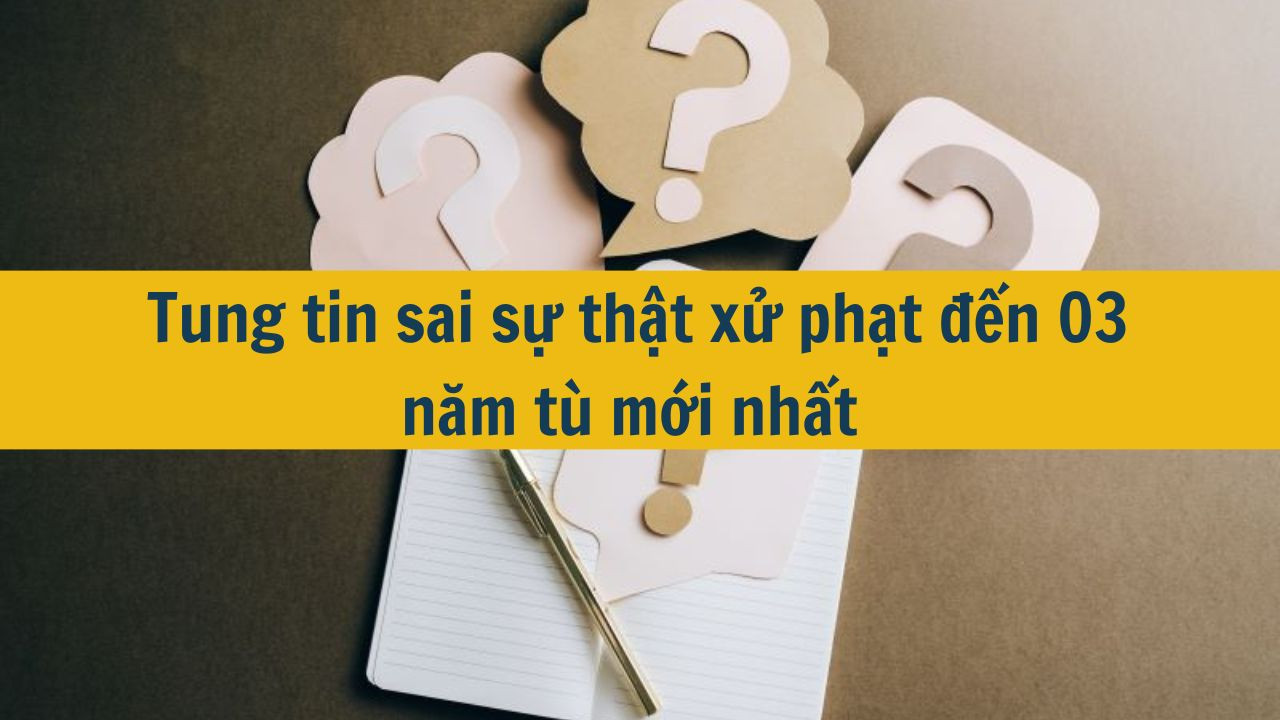
Tung tin sai sự thật xử phạt đến 03 năm tù mới nhất 2025
Đưa thông tin không phù hợp lên mạng trong những năm gần đây đang là một trong những vấn nạn xã hội, gây ra những hậu quả không mong muốn và ảnh hưởng trực tiếp đến cá nhân nói riêng và xã hội nói chung. Vậy tung tin sai sự thật xử phạt đến 03 năm tù mới nhất 2025? Bài viết sau đây sẽ làm rõ vấn đề này. 13/03/2025Có được quay phim người khác khi không có sự cho phép không?

Có được quay phim người khác khi không có sự cho phép không?
Đăng hình người khác lên mạng xã hội trái ý muốn của người đó là một trong những hành vi vi phạm pháp luật, ảnh hưởng trực tiếp đến đời sống tinh thần và vật chất của người đó, gây ra những hậu quả không mong muốn. Vậy có được quay phim người khác khi không có sự cho phép không? Bài viết sau đây sẽ làm rõ vấn đề này. 08/03/2025Sử dụng hình ảnh của người khác khi chưa được cho phép phạt đến 5 năm tù mới nhất 2025?

Sử dụng hình ảnh của người khác khi chưa được cho phép phạt đến 5 năm tù mới nhất 2025?
Đăng hình người khác lên mạng xã hội trái ý muốn của người đó là một trong những hành vi vi phạm pháp luật, ảnh hưởng trực tiếp đến đời sống tinh thần và vật chất của người đó, gây ra những hậu quả không mong muốn. Vậy sử dụng hình ảnh của người khác khi chưa được cho phép phạt đến 5 năm tù mới nhất 2025? Bài viết sau đây sẽ làm rõ vấn đề này. 10/03/2025Đưa thông tin không phù hợp lên mạng có thể bị coi là vi phạm gì? Mức phạt đưa thông tin không phù hợp lên mạng mới nhất 2025

Đưa thông tin không phù hợp lên mạng có thể bị coi là vi phạm gì? Mức phạt đưa thông tin không phù hợp lên mạng mới nhất 2025
Đưa thông tin không phù hợp lên mạng trong những năm gần đây đang là một trong những vấn nạn xã hội, gây ra những hậu quả không mong muốn và ảnh hưởng trực tiếp đến cá nhân nói riêng và xã hội nói chung. Vậy đưa thông tin không phù hợp lên mạng có thể bị coi là vi phạm gì? Mức phạt đưa thông tin không phù hợp lên mạng mới nhất 2025. Bài viết sau đây sẽ làm rõ vấn đề này. 10/03/2025Đăng hình người khác lên mạng xã hội có thể phạt đến 30 triệu mới nhất 2025?


 Luật An ninh mạng 2018 (Bản Pdf)
Luật An ninh mạng 2018 (Bản Pdf)
 Luật An ninh mạng 2018 (Bản Word)
Luật An ninh mạng 2018 (Bản Word)